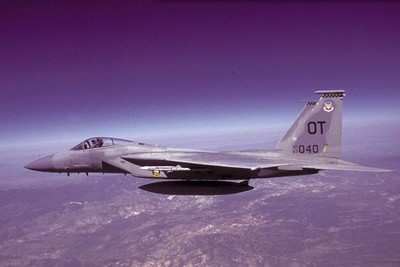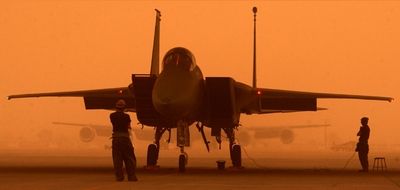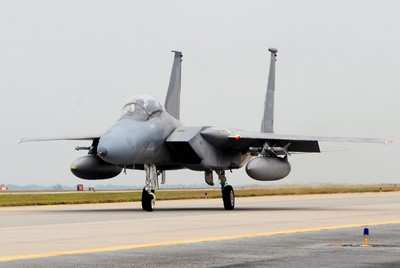The F-15C Eagle Entered The USAF Inventory In 1979
The United States Air Force is continuing to modernize its future fighter force, and part of that evolution includes the sunsetting of the F-15C Eagle division of the United States Air Force Weapons School Weapons Instructor Course.

The single-seat F-15C Eagle entered the U.S. Air Force inventory in 1979, and weapons officers have been trained on the aircraft’s tactics at the Weapons School at Nellis Air Force Base since 1978. Those years of tradition came to an end Dec. 8, as the last cadre of students and instructors flew the final defensive counter air vulnerability for Weapons Instructor Course 21-B.
Maj. Rodolfo Cruz is the director of operations for the 433rd Weapons Squadron and one of the last five WIC instructors for the F-15C. He graduated as part of class 18-A, and became an instructor in 2019. “I love the F-15C,” Cruz said. “We always brag about the record of 104-to-zero and that is predominately based on the fact that we have the air superiority fighter. I don’t want it to die, but we have to move on, because if we continue to rest on our laurels, it’s going to make the fight that much harder for us.”
Cruz said he took a different approach when teaching this last iteration of students, because as the students transition, they will likely be in their jobs a bit longer since there will be no subsequent students to replace them.

“We spent a little bit more time on the critical thinking concept rather than finessing the individual Eagle execution that they should already know. We had to think about how we as the Weapons School think about problems, so that when the graduates go out into the Combat Air Force, they can think about the problems in the same manner,” he said.
Maj. Michael Tope, WIC 21-B F-15C class leader, said he and his fellow F-15C WPS graduates are prepared to take on the new leadership role as the airframe’s last Weapons School graduates.
“We are having to pivot as an Air Force,” he said. “We train against the current threats and to be ready in case we need to employ. The baseline threat has changed so much, and the ranges at which people are shooting and dying in air-to-air war have increased so significantly over the last 20 years, it is pretty incredible.
“The F-15 has some advances, but it’s still the F-15 from the 1970s in a lot of ways,” he added. “That speaks to the capabilities of the maintainers and the people who have worked on the jets, as well as the instructors who have developed different tactics.”

At the Air Force Association’s annual Air, Space & Cyber Conference in September, Gen. Mark Kelly, commander of Air Combat Command, discussed the Air Force’s future fighter roadmap. “We must move the Air Force from seven different platforms toward four plus one,” Kelly said at the conference. “We must keep the F-22 (Raptor) dominant for air superiority in a highly contested environment and facilitate a hot handover with our Next Generation Air Dominance capability.”
He said the F-35 Lightning II will be the cornerstone of the contested environment force, with the F-15E Strike Eagle and EX providing the big range, big weapons and disruptive fifth-generation avionics and sensors to complement the F-35. The newest F-16 Fighting Falcons will remain an affordable capacity fighter, and the A-10 Thunderbolt IIs will be the “plus one.”
 NTSB Final Report: Cozy Cub
NTSB Final Report: Cozy Cub ANN FAQ: Contributing To Aero-TV
ANN FAQ: Contributing To Aero-TV Classic Aero-TV: Seated On The Edge Of Forever -- A PPC's Bird's Eye View
Classic Aero-TV: Seated On The Edge Of Forever -- A PPC's Bird's Eye View ANN's Daily Aero-Linx (04.29.25)
ANN's Daily Aero-Linx (04.29.25) ANN's Daily Aero-Term (04.29.25): Execute Missed Approach
ANN's Daily Aero-Term (04.29.25): Execute Missed Approach





